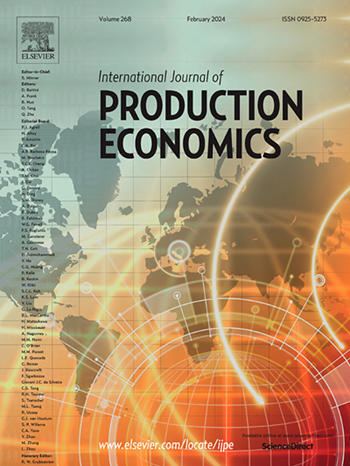How customer digital orientation drives supplier green and low-carbon efforts: The roles of supplier dependence and common ownership
IF 10
1区 工程技术
Q1 ENGINEERING, INDUSTRIAL
引用次数: 0
Abstract
Amid escalating climate change threats and the global imperative to achieve net-zero emissions by 2050, supply chain decarbonization has emerged as a pivotal mitigation strategy. This study examines how customer digital orientation drives supplier green and low-carbon efforts, leveraging spillover effects within buyer-supplier relationships. Using a 2010-2022 panel dataset from multiple sources, we find that customer digital orientation significantly enhances supplier green and low-carbon efforts through normative pressures and empowerment effects. From a supplier-customer relationship view, we further identify that this effect is amplified when suppliers are highly dependent on their customers, as dependence strengthens compliance pressures and enhances technology and resource empowerment. Furthermore, vertical common ownership between suppliers and customers acts as a relational governance mechanism, aligning interests and enhancing collaboration, thereby intensifying the positive spillover effects of customer digital orientation. Finally, heterogeneity tests reveal that the positive spillover effects is more pronounced when suppliers operate in highly competitive industries or face a narrower digital divide with their customers. Our findings provide novel insights into the mechanisms of digital-enabled decarbonization across supply chains, offering actionable pathways for policymakers and firms to accelerate the transition toward net-zero emissions.
客户数字化导向如何推动供应商的绿色低碳努力:供应商依赖和共同所有权的作用
在气候变化威胁不断升级以及到2050年实现净零排放的全球迫切需要的背景下,供应链脱碳已成为一项关键的缓解战略。本研究考察了客户数字化导向如何推动供应商的绿色低碳努力,并利用采购-供应商关系中的溢出效应。使用来自多个来源的2010-2022面板数据集,我们发现客户数字化取向通过规范压力和授权效应显著增强了供应商的绿色和低碳努力。从供应商-客户关系的角度来看,我们进一步发现,当供应商高度依赖客户时,这种影响会被放大,因为依赖会增强合规压力,并增强技术和资源授权。此外,供应商和客户之间的垂直共同所有权作为一种关系治理机制,协调了利益,加强了协作,从而增强了客户数字化导向的正向溢出效应。最后,异质性检验表明,当供应商在竞争激烈的行业中运营或与客户之间的数字鸿沟较小时,正向溢出效应更为明显。我们的研究结果为整个供应链的数字化脱碳机制提供了新的见解,为政策制定者和企业加速向净零排放过渡提供了可行的途径。
本文章由计算机程序翻译,如有差异,请以英文原文为准。
求助全文
约1分钟内获得全文
求助全文
来源期刊
CiteScore
21.40
自引率
7.50%
发文量
266
审稿时长
52 days
期刊介绍:
The International Journal of Production Economics focuses on the interface between engineering and management. It covers all aspects of manufacturing and process industries, as well as production in general. The journal is interdisciplinary, considering activities throughout the product life cycle and material flow cycle. It aims to disseminate knowledge for improving industrial practice and strengthening the theoretical base for decision making. The journal serves as a forum for exchanging ideas and presenting new developments in theory and application, combining academic standards with practical value for industrial applications.

 求助内容:
求助内容: 应助结果提醒方式:
应助结果提醒方式:


